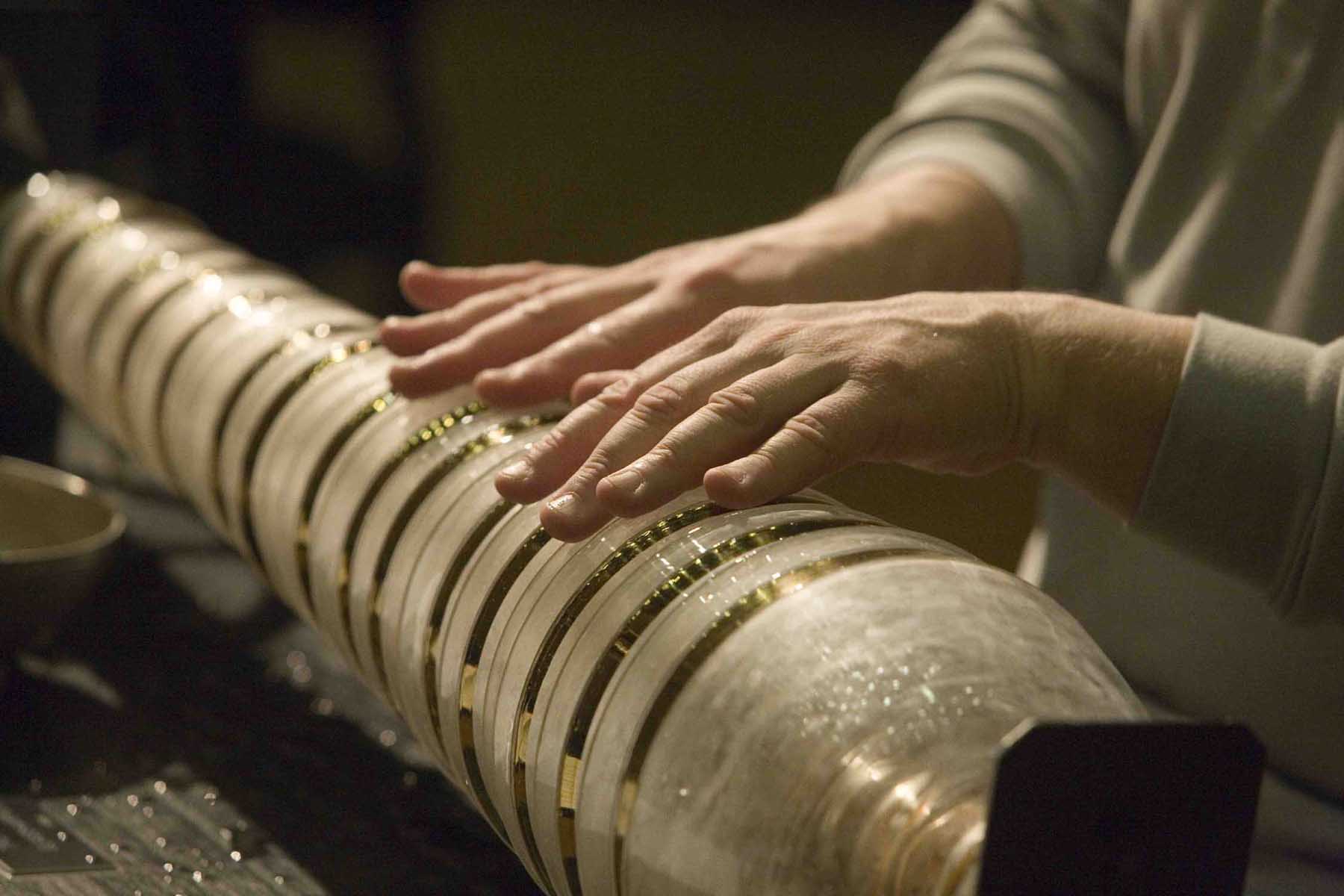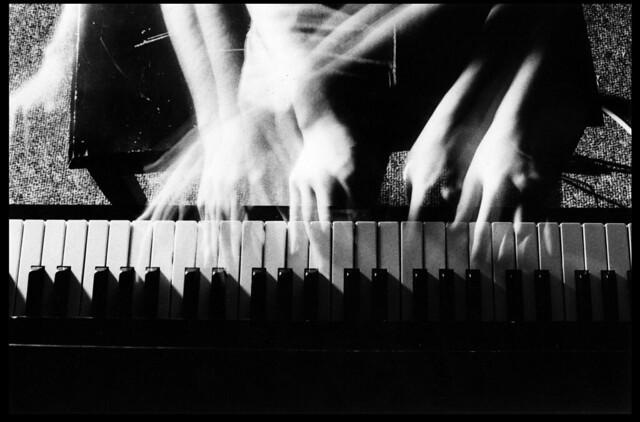 |
| Rehearsing with the Phillips Camerata |
Thursday was also my birthday, and while working with these superb musicians, I was thinking to myself that I couldn’t ask for a better way to spend it. It did, however, take me some time to get comfortable. It might sound like a paradox, but it’s easier for me to relax and feel like myself with a bigger orchestra than a chamber orchestra like the Phillips Camerata. For some reason, when I conduct a symphony orchestra, I am not worried about being silly, or crazy, or whatever the music requires you to be. But there is something about the intimacy of working with a smaller ensemble for the first time that makes me more self conscious, and this gets in the way. It’s kind of like wanting to make a good impression on a first date, which could result in the opposite outcome.
As the rehearsals progressed, I was feeling more and more comfortable and started joking around like I usually do. Bach’s 2nd Brandenburg Concerto, which was also on the program, is one of the most joyful pieces Bach composed. It is written in F Major, but right before the recapitulation in the first movement, it surprisingly ends in an A Minor cadence. When we reached that point in the rehearsal, instead of continuing and finishing the movement as it is written, I stopped my hands and told the musicians that I was thinking about finishing the piece here, in A Minor, “you know, bitter, like life.” The musicians went along with the joke and agreed that we should try it.
It is no coincidence that we chose to perform both of these pieces in the same concert. Bach’s 2nd Brandenburg Concerto was the inspiration for Moravec’s Brandenburg Gate. They are written for a similar instrumentation, with two differences: Moravec replaces the oboe with a clarinet and doesn’t use harpsichord. The clarinetist also plays the bass clarinet, adding a lower range and a special color to the piece.
On Saturday, we were expecting the arrival of Moravec in our rehearsal. Before the rehearsal, I went to Eastern Market for lunch and afterwards took a short walk. It was a sunny, hot day in Washington, DC, and a big crowd was wandering between the restaurants, cafes, and art stands wearing shorts and flip-flops. I was wearing long pants and a buttoned down shirt, trying to look respectful for the rehearsal and the composer’s visit. The most I could do to ease the burden of the heat a bit was folding up my sleeves. I stopped a taxi and directed the driver to the Phillips. The air conditioning wasn’t working, and I got out of the car soaking wet. I had a little time before the rehearsal started, so I went into an ice cream shop near by, had a coffee, and cooled off in the AC.
 |
| with Paul Moravec right before going on stage |
Brandenburg Gate starts with a dizzying fragment that repeats over and over and is a variation based on the notes B-flat, A, C and B natural (or H, in German), i.e., the notes that form Bach’s name (B-A-C-H). Before the performance, Moravec and I gave a talk to the audience that involved some humorous moments. I argued that the repeated BACH pattern sounds like Bach is haunting you.
“I think of it more like a ‘Where’s Waldo?’ painting,” Moravec said. “A huge musical tapestry in which you have to spot the BACH notes.”
I replied that, growing up in Israel, I had no idea what he was talking about.
The second movement opens with the same BACH notes, but this time they are harmonized in a manner that gives the music a kind of an ancient scent. The third movement, virtuosic and challenging, features some manic, edgy music, as if the players have lost all control and are just going wild on their instruments. But if you explore the parts separately, you will discover that they are derived from the BACH notes as well, transformed into different keys, octaves, and sometimes played backwards.
The audience received our performance of Moravec and Bach warmly, with a standing ovation. After the concert, Moravec, with a big smile on his face, hugged and thanked me. Then, his face took up a more serious expression. “So, you don’t know what Where’s Waldo is.”
To listen to Brandenburg Gate, click here

















